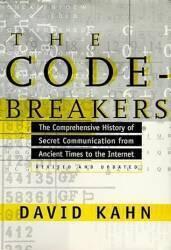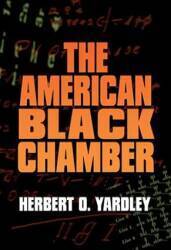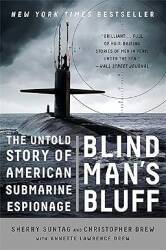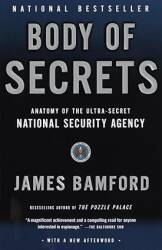
The History of Information Security
and
INFOSEC / Military History Tourism
Historical Travel
A visit to the Cabinet War Rooms and Churchill Museum in London UK — Bletchley Park
A visit to Bletchley Park, north of London UK — WWII / Cold War Tunnels at Dover
Tunnels cut into the White Cliffs, originally dating from the Napoleanic Wars, greatly expanded and used during World War II and the Cold War
Used in the D-Day landings in Normandy and in Operation Market Garden UK — WWII Communications Gear
Exhibits in St James Park in London in June 2005 commemorating the 60th anniversary of the end of World War II
A large radar system used during World War II, on top of the White Cliffs just outside Dover. Part of the facility was used throughout the Cold War to detect and locate nuclear detonations UK — Scapa Flow and the Churchill Barriers
The gigantic natural harbor in the Orkney Islands used by the Royal Navy in both World Wars. And, the artificial defenses constructed in the early 1940s
Some recommended books
Before World War II
As for the history of communication security, David Kahn's The Codebreakers starts with events from our earliest records of military history, and includes some references to communication security and the very simple atbash cipher in the Old Testament.
The Victorian Internet is a fascinating description of how this late-20th-century Internet was not the big change in communication. The real revolution was the development and rapid spread of telegraph systems in the 1800s. It was a nearly instantaneous communications network that had huge changes on governments, business, and personal lives. It also had a lot of communications security issues, and led to a revolution in cryptography. These developments greatly agitated governments, which tried and largely failed to control it to their advantage. And all this happened in the 1800's!
The Zimmermann Telegram describes the cryptanalysis of a German cable that brought the United States into World War I. Germany was about to resume unrestricted submarine warfare, and feared that the United States would enter the war once its passenger and cargo ships started being sunk by German U-boats. Germany was making an offer to Mexico: join Germany in the war, against the U.S., and Germany would see that Mexico regained the U.S. states of Texas, New Mexico, and Arizona after America's defeat.
As you might imagine, that did not go over well in the United States and served to bring the U.S. into the war sooner rather than later.
The American Black Chamber is Herbert Yardley's description of American cryptanalysis from World War I into the 1920s. I have a travel page showing the Manhattan locations of Yardley's "Black Chamber" operation, and another with Yardley's failed attempt to run a restaurant.
World War II
David Kahn's Seizing the Enigma: The Race to Break the German U-Boat Codes 1939-1943 describes the strategic importance of anti-submarine warfare in the Atlantic, and how the Allies broke the German codes.
Hugh Sebag-Montefiore's Enigma — The Battle for the Code describes naval operations to seize Axis crypto gear and code books.
The Hut Six Story: Breaking the Enigma Codes was one of the first books to describe the work done at Bletchley Park. Click here to see my pictures and description of a visit to Bletchley Park.
The Secret in Building 26 describes how Joe Desch led the project by NCR (National Cash Register) in Dayton, Ohio, to build the hardware used to attack the Axis crypto systems.
Neal Stephenson's Cryptonomicon is fiction, more or less, but it is filled with clear explanations of various components of information security, and references to actual cryptology of 1935-1945. For "Electric Till Company" read "National Cash Register", and so on. Alan Turing and other significant figures appear as characters.
Amazon
ASIN: 0060512806
The entire book Pearl Harbor Revisited: United States Navy Communications Intelligence, 1924-1941 is available for download at navy.mil.
Post World War II

Soviet security poster from 1954,
Boltun — Nakhodka dlya vraga!,
equivalent to the WWII Allied
Loose lips sink ships.
Deep Black: Space Espionage and National Security is about the sensor platforms.
Blind Man's Bluff describes U.S. Navy fiber tapping operations on the floor of the Sea of Okhotsk and elsewhere.
Beyond this, it's largely James Bamford's game. He wrote The Puzzle Palace in 1983, and it was the best book about the NSA because it was the only book about the NSA.
Body of Secrets came out about twenty years later, an updated and improved study of the NSA.
A Pretext for War: 9/11, Iraq, and the Abuse of America's Intelligence Agencies came out in 2005. Its subtitle shows the basis for his anger that shows up in this one.
His most recent book is The Shadow Factory: The NSA from 9/11 to the Eavesdropping on America. He's still upset (appropriately, I think) about the misuse of intelligence agencies by the Executive Branch.
The journal Antiquity has had a number of interesting articles, including:
"Monuments of war: defining England's 20th-century defence heritage", C.S. Dobinson, J. Lake & A.J.Schofield, Antiquity 71(1997): 288-299.
"The Cold War", N. James, Antiquity 76(2002): 664-666.
"The application of First World War aerial photography to archaeology: the Belgian images", Birger Stichelbaut, Antiquity 80(2006): 161-172
And specifically on the topic of using satellite imagery:
- "Declassified satellite photographs and archaeology in the Middle East: case studies from Turkey", David Kennedy, Antiquity 72(1998): 553-561
- "CORONA satellite photography: an archaeological application from the Middle East", G. Philip, D. Donoghue, A. Beck & N. Galiatsatos, Antiquity 76(2002): 109-118.
- "CORONA Satellite Photography and Ancient Road Networks: A Northern Mesopotamian Case Study", Jason Ur, Antiquity 77(2003): 102-115.
- "Evaluating CORONA: A case study in the Altai Republic (South Siberia)", Wouter Gheyle, Raf Trommelmans, Jean Bourgeois, Rudi Goossens, Ignace Bourgeous, Alain De Wulf & Tom Willems, Antiquity 78(2004): 391-403.
- "Evaluation of Corona and Ikonos high resolution satellite imagery for archaeological prospection in western Syria", Anthony Beck, Graham Philip, Maamoun Abdulkarim & Daniel Donoghue, Antiquity 81(2007): 161-175.
- "The application of declassified KH-7 GAMBIT satellite photographs to studies of Cold War material culture: a case study from the former Soviet Union", Martin J.F .Fowler, Antiquity 82(2008): 714-731.
- "Stereo analysis, DEM extraction and orthorectification of CORONA satellite imagery: archaeological applications from the Near East", Jesse Casana & Jackson Cothren, Antiquity 82(2008): 732-749.
Finally, the M.I.T. Radiation Lab Series on Radar System Engineering is available for free download as PDF here.
Travel pictures
and suggestions Computer and
network security



